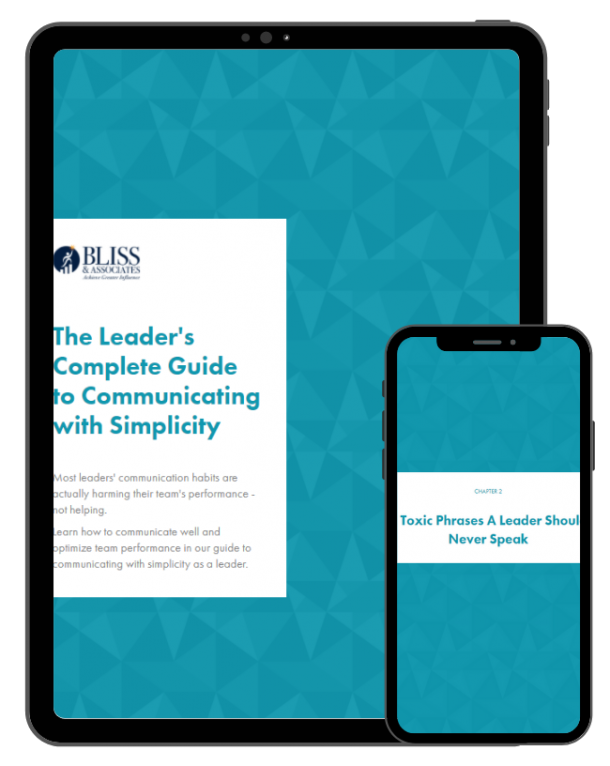
I was recently speaking with a client, Tim, who runs a $200 million division of a larger company. The topic of our conversation revolved around one of his direct reports, Neal, who was not delivering up to Tim’s expectations. Tim has been dealing with this issue for about a year and Neal’s contribution continues to fall short of the goal.
Tim is a great leader who has a significant track record of positive and growth-oriented results. He has even won awards in the past for his team’s accomplishments.
Yet, regarding his efforts to coach Neal, what had worked for Tim with other team members in the past was clearly not working now. Despite this dismal lack of performance, Tim still thought that regurgitating his expectations to Neal for the 10th time was going to have the desired impact.
So, I decided to take a different approach with Tim. When I asked Tim what he really wanted Neal to do differently, he thought for a moment then said, “I would like to have assurance from Neal that he not only understands my expectations, but that he has a definite plan to achieve those expectations.”
Tim was on to something. My follow up question was, “How do you know for sure whether or not someone really understands a point you are making in a conversation?” Tim replied, “When the person can play it back to me in their own words and not change the meaning or outcome.”
“When was the last time you asked Neal to play something back to you?” I asked. Tim replied rather sheepishly, “By my best recollection, never.” BAM – Tim received the virtual epiphany I was hoping he would experience. In this moment, Tim knew he needed to treat Neal differently.
We wrapped up our conversation with Tim outlining for me the words he was going to use to clarify his expectations and the follow-up questions he would ask Neal. Once he was convinced Neal understood the expectations, he would send Neal off to develop a plan to accomplish them.
Tim finally realized he was guilty of a leadership error – assuming his team understood his expectations merely because he stated them. Effective communication only happens when the listener fully understands what the speaker has said. It is a myth to believe that people understand exactly what you say and what you want.
Leading a team toward great results does not happen by mental telepathy – leadership is an action and a two-way participation sport!
Here is an outline to follow to ensure you stop assuming those on your team understand your expectations:
1. Start with a concise statement of your vision for the end result. This goal becomes outcome focused, not task specific. The goal must have a clear timeframe attached to it.
2. Clearly outline your expectations regarding exceptional performance or an outstanding outcome. Clearly state what the future will “look like” when the result is achieved. This visual image will confirm the words you use.
3. Ask the team member to play back to you what they heard you say regarding the expected outcome, timeframe, and what the future looks like.
4. Assign them the task of developing the action plan, complete with resources needed, interim milestones, and measureable progress steps along the way. Ask them to tell you how long it will take them to complete the action plan – hopefully no longer than a week – and schedule a follow-up meeting to review the plan they have developed.
5. Before they leave this first meeting with you, have them again repeat their understanding of the goal, outcome, and what the future will look like when the outcome is achieved. Ask them to restate the responsibility they have for developing the action plan and when you will review it together.
6. When the action plan is reviewed and you make necessary adjustments, have the team member put it all in writing so there is no misunderstanding going forward. This confirms your expectations for exceptional performance and an outstanding outcome.
7. Schedule regular goal review sessions to assess progress against the milestones. In between these sessions, look for opportunities to provide frequent feedback on their performance.
This process ensures no assumptions are being made by you or those on your team. It also eliminates surprises. You will know if plans are on track. If they are not, you can help or coach your team member to get back on track.
Hopefully, if you are like Tim, following this practice will eliminate the assumptions you may be making about your team and their understanding of your expectations.
Let me know your thoughts on this outline – do you currently utilize a similar strategy? How have you made a practice like this better or more predictable?
Best regards,
Bill

